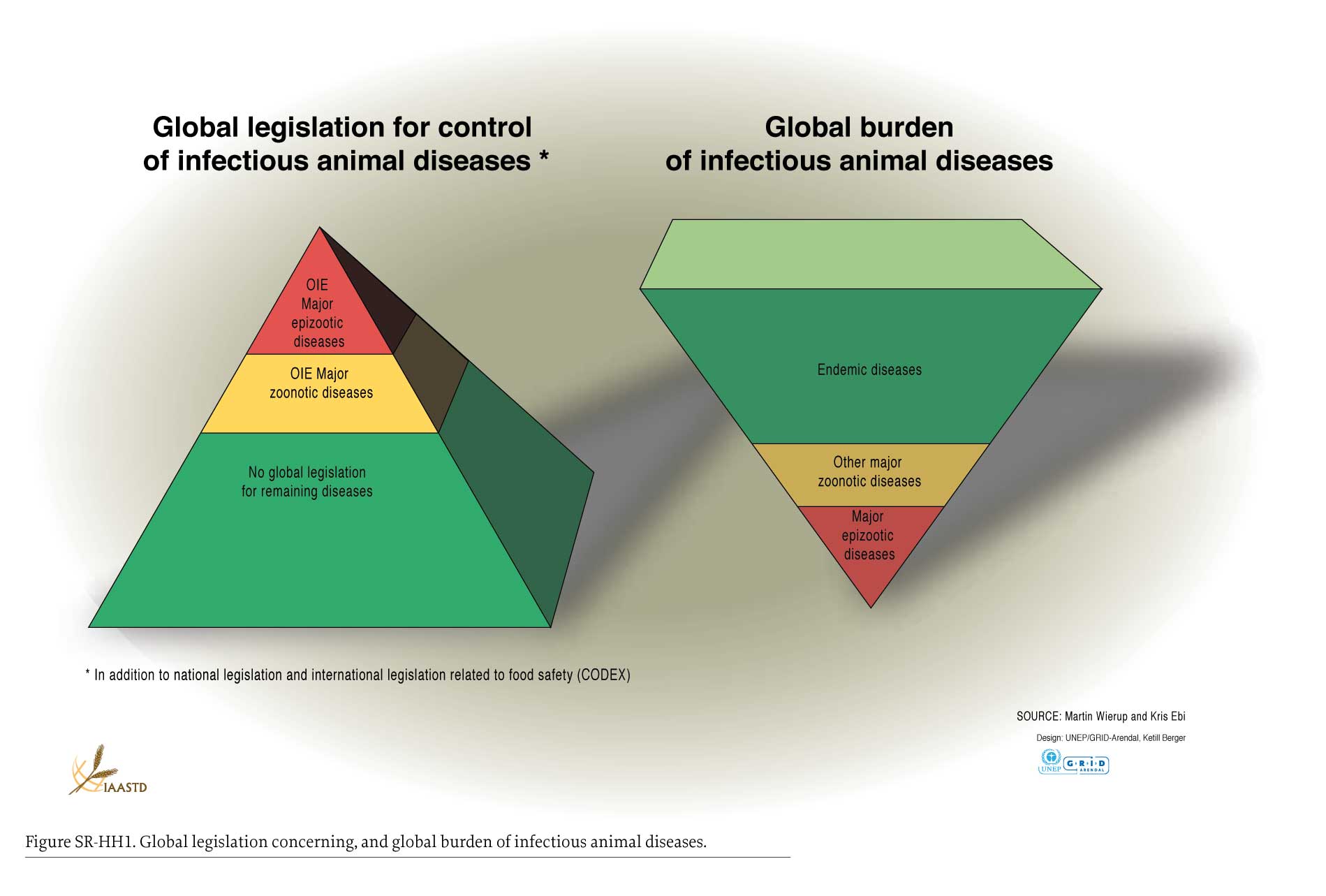
| Previous | Return to table of contents | Search Reports | Next |
| « Back to weltagrarbericht.de | ||
56 | IAASTD Synthesis Report

Figure SR-HH1. Global legislation concerning, and global burden of, infectious animal diseases.
Chapter 3; NAE]. Future AKST needs to refocus on consumer needs and well-being, for example the importance of diet quality and diversity should be main drivers of production and not merely quantity or price. Fiscal policies should take into account impacts on public health. Agricultural subsidies, sales taxes and food marketing incentives or regulations could be refocused to improve nutrition and public health as a primary aim, for example by promoting production and consumption of more healthy foods such as fruits and vegetables. AKST could improve dietary quality by regulating healthy product formulation through legislation or taxation (e.g., higher sales tax for food/foodstuffs known to cause adverse health effects, or limiting quantities of specific foods). Regulation may be necessary if voluntary industry codes are unsuccessful as has been the case in Sweden (banning of the use of transfats in processed foods) and the UK (reducing quantities of salt in processed foods). Other options for tackling nutrition-related chronic diseases include international agreements on and/or regulation of food labeling and health claims of products to ensure the marketing and labels are scientifically accurate and understandable for all consumers [Global Chapters 1,3; NAE Chapter 2]. Such intersectoral polices should be designed and implemented alongside local and national public health action to maximize impact. Food safety. AKST, along with strengthening and improving public health and environmental systems, can help ensure animal health, plant health, and food safety [CWANA Chapter 5; ESAP Chapter 3; Global Chapters 2, 5, 6, 7, 8; LAC Chapters 2, 3; NAE Chapters 2, 4; SSA Chapter 2]. This requires concerted efforts along the food chain, taking |
|
a broad agroecosystem health approach. Examples include good agricultural practices (GAPs) and good manufacturing practices, integrated pest management, biological control of pests, and organic farming. These approaches, along with regulatory frameworks, can inform effective and safe pest and crop management strategies to manage the risks associated with pathogen contamination of foods. Implementing GAPs may help developing countries cope with globalization without compromising sustainable development objectives. Hazard analysis [risk assessment and food chain traceability] can enhance biosecurity and biosafety, disease monitoring and reporting, input safety [including agricultural and veterinary chemicals], control of potential foodborne pathogens, and traceability. Sanitation systems throughout the food production chain are integral to managing the risks associated with pathogens. Also needed is effective education of consumers in proper food handling and preparation. |
| Previous | Return to table of contents | Search Reports | Next |
| « Back to weltagrarbericht.de | ||